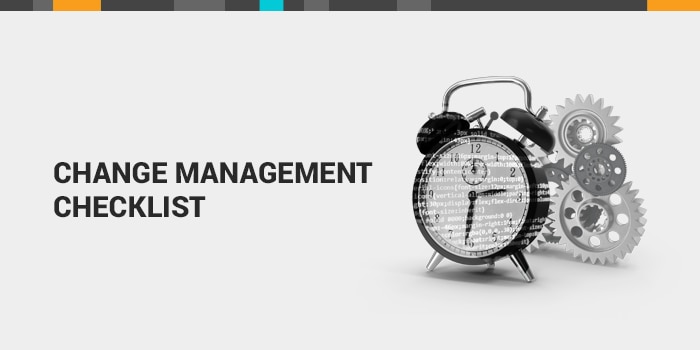Part 1 of this series introduced
IT Service Management (ITSM) and a few of the adaptable frameworks available to fit the needs of an organization. This post focuses on the benefits of using a couple of the principles from the Lean methodology to craft ITSM.
I’d like to acknowledge and thank
Trish Livingstone and
Julie Johnson for sharing their expertise in this subject area. I leaned on them heavily.
The Lean Methodology
The Lean methodology is a philosophy and mindset focused on driving maximum value to the customer while minimizing waste. These goals are accomplished through continuous improvement and respect for people. More on this in a bit.
Because the Lean methodology originated in the Toyota Production System, it’s most commonly associated with applications in manufacturing. However, over the years, Lean has brought tremendous benefits to other industries as well, including knowledge work. Probably the most recognizable form of Lean in knowledge work is the Agile software development method.
Continuous Improvement
“If the needs of the end user are the North Star, are all the services aligned with achieving their needs?” — Julie Johnson
Continuous improvement should be, not surprisingly, continuous. Anyone involved in a process should be empowered to make improvements to it at any time. However, some situations warrant bringing a team of people together to affect more radical change than can be achieved by a single person.
3P—Production, Preparation, Process
One such situation is right at the beginning of developing a new product or process.
This video and
this video demonstrate 3P being used to design a clinic and a school, respectively. In both cases, the design team includes stakeholders of all types to gather the proper information to drive maximum value to the customer. The 3P for the clinic consists of patients, community members, caregivers, and support staff. The same process for the school includes students, parents, teachers, and community members.
While both examples are from tangible, brick-and-mortar situations, the 3P is also helpful in knowledge work. One of the most challenging things to gather when initiating a new project is proper and complete requirements. Without sufficient requirements, the creative process of architecting and designing IT systems and services often ends up with disappointing outcomes and significant rework.
The goal of the 3P is to get the new initiative started on the right path by making thoughtful, informed decisions using information gathered from all involved in the process. A 3P should begin with the team members receiving a short training session on how to participate in the 3P. Armed with this knowledge and facilitated by a Lean professional keeping things on track, the 3P will produce results more attuned to the customer’s needs.
This 3P mapped out the information flows that fed directly into the design of new safety alert system software for healthcare.
Value Stream Mapping (VSM)
“If you bring visibility to the end-to-end process, you create understanding around why change is needed, which builds buy-in.” — Trish Livingstone
Another situation warranting a team of people coming together to affect more radical change is when trying to improve an existing process or workflow. Value Stream Mapping (VSM) is especially useful when the process contains multiple handoffs or islands of work.
For knowledge work, VSM is the technique of analyzing the flow of information through a process delivering a service to a customer. The process and flow are visually mapped out, and every step is marked as either adding value or not adding value.
There are many good people in IT, and many want to do good work. As most IT departments operate in silos, it’s natural to think if you produce good quality work, on time, and then hand it off to the next island in the process, the customer will see the most value. The assumption here is each island in the process is also producing good quality work on time. This style of work is known as resource efficiency. The alternative, referred to as flow efficiency, focuses on the entire process to drive maximum customer value.
This video, although an example from healthcare and not knowledge work, explains why flow efficiency can be superior to resource efficiency.
I was presented with a case study where a government registrar took an average of 53 days to fulfill a request for a new birth certificate. VSM revealed many inefficiencies because of tasks adding no value. The process after the VSM fulfilled requests in 3 days without adding new resources. The registrar’s call volume fell by 60% as customers no longer needed to phone for updates.
It’s easy to see how Value Stream Mapping could help optimize many processes in IT, including
change management, support ticket flow, and maintenance schedules, to name a few.
Respect for People
Respect for people is one of the core tenets of Lean and a guiding principle for Lean to be successful in an organization.
Respect for the customer eliminates waste. Waste is defined as anything the customer wouldn’t be willing to pay for. In the case of government service, waste is anything they wouldn’t want their tax dollars to pay for.
Language matters when respecting the customer. The phrase “difficult user” is replaced with “a customer who has concerns.” As demonstrated in the 3P videos above, rather than relying on assumptions or merely doing things “the way we’ve always done them,” customers are actively engaged to meet their needs better.
Lean leadership starts at the top. Respect for employees empowers them to make decisions allowing them to do their best work. Leadership evolves to be less hands-on and takes on a feeling of mentorship.
Respect for coworkers keeps everyone’s focus on improving the processes delivering value to the customer. Documenting these processes teaches new skills, so everyone can participate and move work through the system faster.
The 4 Wins of Lean
Using some or all of the Lean methodology to customize
IT service management can be a win, win, win, win situation. Potential benefits could include:
- Better value for the ultimate customer (employees)
-
- Reduced costs by eliminating waste
- Faster service or product delivery
- Better overall service
- Better for the people working in the processes
-
- Empowered to make changes
- Respected by their leaders
- Reduced burden
- Better financially for the organization
-
- Reduced waste
- Increased efficiency
- Reduced cost
- Better for morale
-
- Joy in the workplace
- Work has meaning
- No wasted effort
- Work contributes to the bottom line







